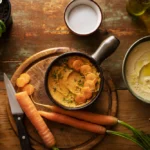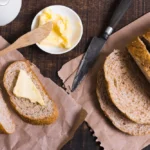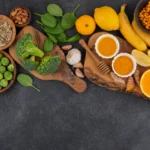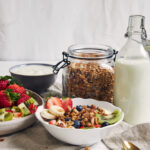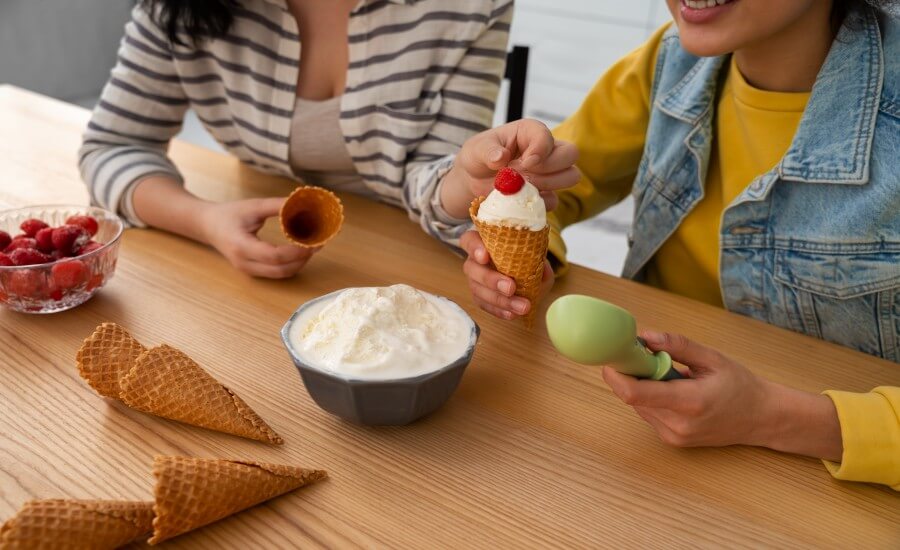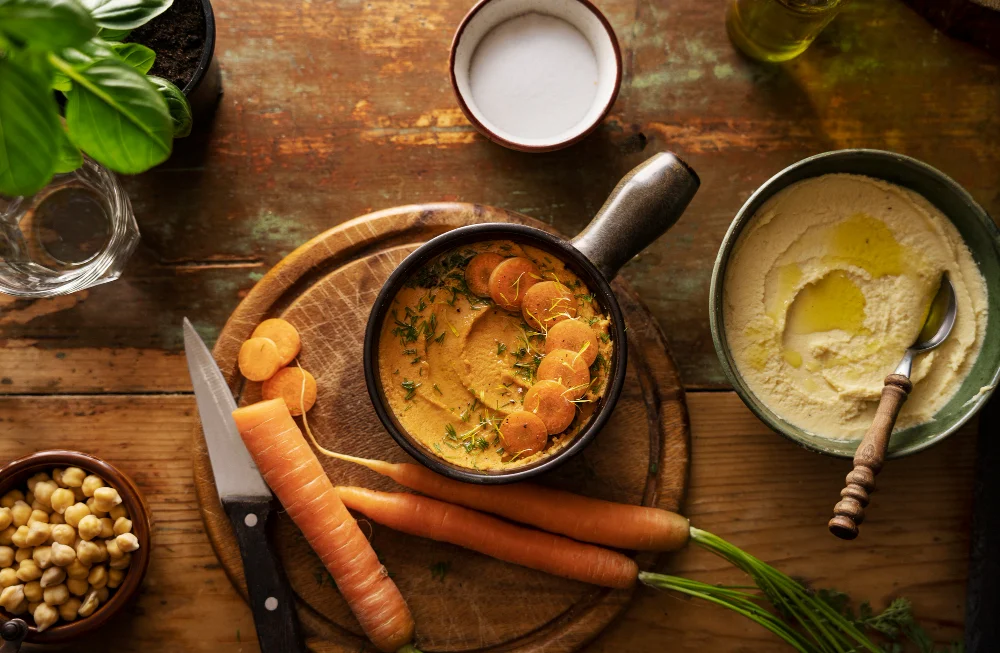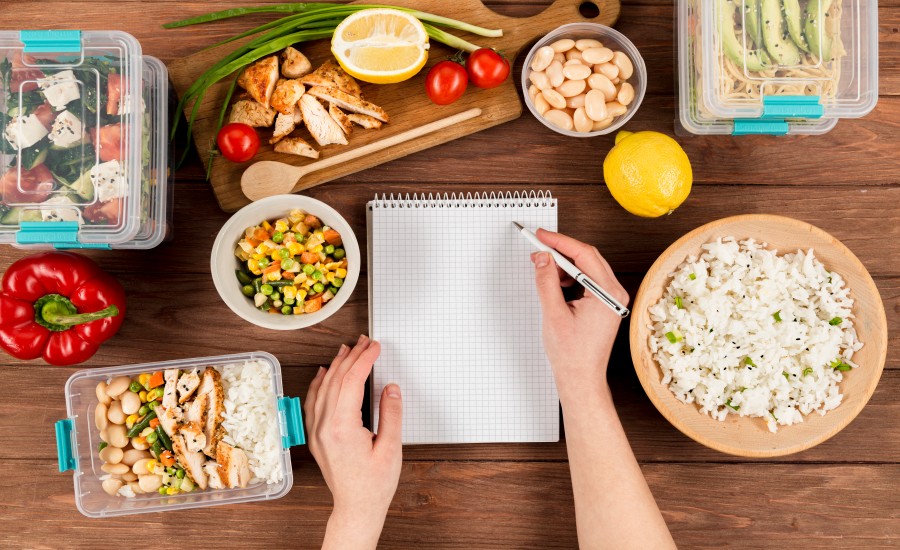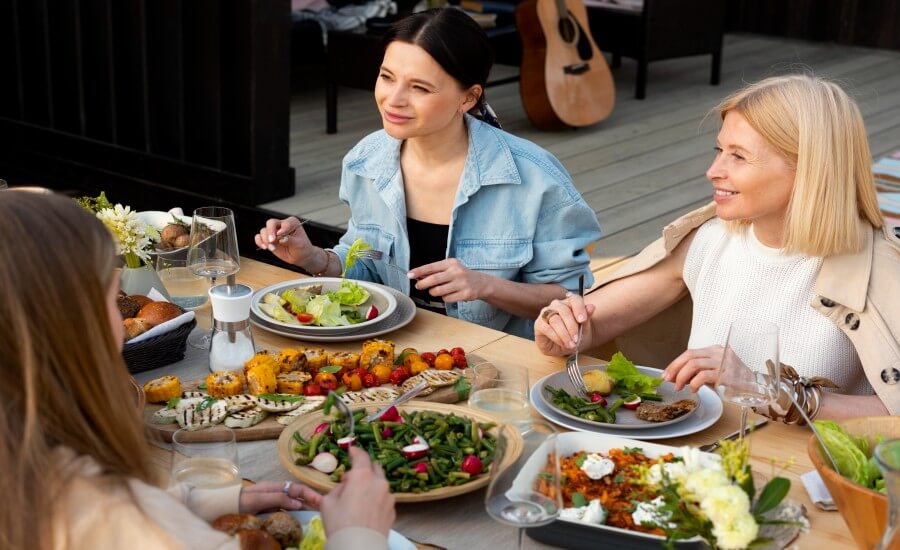There’s arguably no dessert more universally loved, especially during scorching summer days like those currently experienced in Jaipur, than ice cream. Its cool creaminess offers pure, simple pleasure. But can you achieve that same luscious, satisfying texture without dairy? Absolutely! The world of creamy vegan ice cream recipes is booming, offering decadent, dairy-free frozen treats you can easily make at home. This guide explores the secrets to achieving plant-based ice cream perfection, analyzing ingredients and techniques through the lenses of nutrition, ethics, environment, and practical home preparation, ensuring you can whip up compassionate cool treats to beat the heat.
LENS 1: Nutritional Analysis (Indulgence with Nuances)

While ice cream is undeniably an indulgent treat, homemade vegan versions allow for ingredient control and offer different nutritional profiles compared to dairy or commercial options.
- Decoding the Base: Creaminess in vegan ice cream often comes from fat and specific textures:
- Coconut Cream/Milk (Full-Fat Canned): The most common base for richness mimicking dairy cream due to its high saturated fat content. Delivers a luxurious mouthfeel but contributes significantly to saturated fat intake.
- Cashew Cream (Soaked & Blended Cashews): Provides exceptional creaminess with primarily monounsaturated fats, plus some protein and minerals (magnesium, zinc). Requires a good blender.
- Banana “Nice Cream” (Frozen Bananas): A whole-food base! Naturally sweet (reducing need for added sugar), high in potassium and fiber, virtually fat-free unless other ingredients are added (like peanut butter). Texture is soft-serve like when freshly blended.
- Other Bases: Blended silken tofu (adds protein, lighter texture), avocado (healthy fats, needs strong flavours like chocolate or lime to mask), commercial vegan creams (variable ingredients/nutrition).
- Sweetness & Sugar: Homemade allows you to control the type and amount of sweetener. Options include regular sugar (check if vegan), liquid sweeteners like maple syrup or agave, date paste (adds fiber/minerals), or traditional Indian jaggery (gur). Fruit-based nice creams require little to no added sugar. Commercial vegan ice creams can sometimes be very high in sugar.
- Fat Content & Type: Vegan ice creams eliminate dietary cholesterol. Saturated fat levels vary hugely – high in coconut-based recipes, moderate in cashew-based (mostly unsaturated), very low in banana nice cream (before additions).
- Fortification Factor: Unlike many commercial plant milks or dairy milk, homemade ice cream bases (unless using fortified plant milk within the recipe) generally lack fortification with Calcium and Vitamin D. Vitamin B12 must come from supplements/other fortified foods in a vegan diet.
- Adding Nutritional Value: Incorporating fresh fruits (like seasonal mangoes/aam – perfect for Jaipur summers!, berries), dark chocolate (antioxidants), nuts, and seeds can add fiber, vitamins, minerals, and healthy fats.
- Mindful Indulgence: Vegan ice cream is still a dessert. Enjoying reasonable portions as part of a balanced diet is key. Choosing fruit-based nice cream or cashew bases can offer a slightly more nutrient-dense treat compared to high-fat coconut cream versions. How can you modify a vegan ice cream recipe (e.g., using dates for sweetness, adding fruit) to make it slightly more nourishing while still feeling indulgent?
Nutritional Deep Dive: Decoding Vegan Ice Cream Bases
- Coconut Cream: Pros: Very rich, creamy, widely available (canned), mimics dairy cream well. Cons: High in saturated fat, distinct coconut flavour (not always desired).
- Cashew Cream: Pros: Very creamy, neutral flavour, provides healthy fats and minerals. Cons: Requires soaking and high-speed blending, cashews can be expensive.
- Banana Nice Cream: Pros: Uses whole fruit, naturally sweet, low fat, high fiber/potassium, incredibly easy, no churn needed. Cons: Distinct banana flavour, soft-serve texture (can get icy if hard-frozen).
- Tofu/Avocado: Pros: Add protein (tofu) or healthy fats (avocado). Cons: Can affect texture/flavour, may not be as universally appealing as coconut/cashew bases.
Voice of Experience (Plant-Based Nutritionist): “Homemade vegan ice cream allows fantastic control – you can reduce sugar, avoid additives, and choose your fat source. While options like coconut cream deliver richness, they are high in saturated fat, so enjoy them as occasional treats. Cashew bases offer healthier fats, and banana nice cream is a brilliant low-fat, whole-food option packed with potassium. Remember they aren’t typically fortified like dairy, so get calcium and Vit D elsewhere.” – Divya Sharma, RDN
LENS 2: Ethical Framework (Compassionate Cones)

Choosing and making vegan ice cream aligns indulgence with compassionate values.
- Dairy-Free Delight: The core ethical choice is enjoying a beloved frozen dessert without contributing to the animal welfare issues and environmental impacts associated with the dairy industry.
- Conscious Ingredient Sourcing: Even for treats, ethical sourcing matters:
- Fair Trade: Choose Fair Trade certified sugar, cocoa/chocolate, vanilla, coffee, or bananas when available.
- Nuts & Coconut: Be mindful of sourcing. Look for ethically sourced cashews (considering labour practices) and coconut products from sustainable suppliers if possible.
- Local Fruits: Utilizing seasonal, local fruits (like mangoes readily available and celebrated in Rajasthan during summer) supports local farmers and reduces the footprint of imported flavourings.
- Reducing Packaging Waste: Making ice cream at home eliminates the plastic tubs and lids associated with store-bought brands. Store homemade ice cream in reusable containers.
- Sharing Compassionate Joy: Creating delicious homemade vegan ice cream to share at gatherings, parties, or just with family is a wonderful way to showcase how indulgent and satisfying vegan food can be, fostering positive connections and potentially inspiring others. It proves ethics and pleasure coexist beautifully. What local, seasonal fruit available now could you feature in an ethically sourced homemade vegan ice cream?
Hidden Benefits: Pure Pleasure Alignment
Enjoying a truly decadent dessert without any underlying ethical conflict (regarding animal welfare or potentially exploitative sourcing if chosen carefully) can lead to a purer, more profound sense of pleasure and satisfaction.
Voice of Experience (Vegan Dessert Blogger): “There’s something special about making vegan ice cream from scratch. You control the quality, avoid unnecessary additives, and create pure, compassionate indulgence. Sharing a scoop of homemade cashew-vanilla or fresh mango sorbet feels like sharing joy that’s kind to everyone.” – @JaipurVeganSweets (hypothetical handle)
Critical Reassessment: Cost, Equipment & Indulgence Balance
Acknowledge that ingredients like cashews, quality vanilla, or imported berries can be expensive. While no-churn methods exist, high-speed blenders or ice cream makers (less common in average Indian households) yield best results, potentially creating an accessibility barrier. Maintain perspective – ice cream is a treat, and mindful enjoyment is key regardless of its vegan status.
LENS 3: Ingredient Science & Environment (The Creamy Freeze & Footprint)
Achieving that coveted creamy texture in vegan ice cream involves understanding the science of freezing and leveraging plant-based ingredients effectively, often with environmental advantages.
- The Science of Creaminess (Fighting Ice Crystals): Smooth ice cream requires minimizing the size of ice crystals. Key factors:
- Fat: Fat globules (from coconut, cashews, avocado) physically obstruct ice crystal growth, leading to a smoother texture. Higher fat content generally means creamier results.
- Sugar: Sugar lowers the freezing point of water, meaning less water freezes solid at typical freezer temperatures, resulting in a softer, more scoopable texture. It also interferes with crystal growth.
- Air (Overrun): Churning incorporates air, making the ice cream lighter and contributing to a smoother mouthfeel. No-churn methods aim to minimize large crystals through other means (high fat/sugar, specific ingredients like condensed plant milk, or blending frozen base).
- Stabilizers: Commercial ice creams often use gums; homemade versions rely on the natural properties of fats, sugars, and sometimes starches or the viscosity of blended bananas/cashews.
- How Vegan Bases Work:
- Coconut/Cashew Cream: High fat content acts as the primary barrier to ice crystal formation.
- Banana Nice Cream: The high pectin content and natural viscosity of blended frozen bananas create a surprisingly creamy, soft-serve texture without much added fat or sugar.
- Environmental Impact:
- Dairy vs. Plant Bases: Producing dairy cream/milk has a significantly higher environmental footprint (GHG emissions from cows, land for grazing/feed, water use) than producing coconut milk, cashew milk (despite cashew water use), soy milk, or oat milk.
- Nut Footprints: Coconut production raises concerns about monoculture and land use in tropical regions. Cashews and almonds have high water demands. Choosing bases wisely matters.
- Seasonal Fruit Power: Using local, seasonal fruits like mangoes drastically reduces the transport emissions associated with imported fruits often used for flavouring.
- Energy Use: Freezing requires energy. Ice cream makers use electricity during churning. Homemade likely has a lower total energy footprint than commercial production/transport/retail freezing, especially if using energy-efficient home freezers.
- Packaging: Eliminating plastic tubs is a significant environmental win. Considering the environmental footprint, which vegan ice cream base (coconut, cashew, banana, soy) seems like the most sustainable choice in your region?
Market Transformation Map Suggestion: Data showing the rapid growth of the global and Indian market share for commercially produced vegan ice creams (brands like Ben & Jerry’s non-dairy, local Indian brands if prominent).
Voice of Experience (Food Scientist specializing in Frozen Desserts): “Creating creamy vegan ice cream is about managing ice crystal growth without dairy fat. High levels of plant fats (coconut, cashew) or the unique structure of blended frozen bananas interfere with crystal formation. Sugar content is also critical for texture and freezing point depression. Balancing these elements is key to achieving a smooth, scoopable result.” – Dr. Anita Rao, Food Texture Lab
LENS 4: Everyday Practitioner’s Experience (Recipes, Techniques & Tips)
Let’s get to the delicious part – making creamy vegan ice cream recipes at home! No ice cream maker needed for many options.
Methods & Base Recipes (Adaptable):
- The Easiest: Banana “Nice Cream” (No-Churn)
- Method: Freeze very ripe banana chunks until solid. Blend in a food processor or high-speed blender until smooth and creamy like soft-serve. May need a splash of plant milk to get it moving.
- Variations: Add cocoa powder (chocolate), peanut butter, frozen berries, mango chunks, mint extract, vanilla.
- Texture: Best eaten immediately. Freezing longer makes it very hard; let soften slightly before scooping.
- Rich Coconut Milk Base (Churn Recommended, No-Churn Possible):
- Method: Whisk 1 can (400ml) full-fat canned coconut milk (use a good quality one) + 1/2 to 3/4 cup sweetener (sugar, maple, jaggery) + pinch salt + 1-2 tsp vanilla extract. Chill mixture thoroughly (several hours/overnight).
- Churn: Pour chilled mixture into ice cream maker and churn according to manufacturer’s instructions.
- No-Churn Option 1: Use vegan condensed milk (store-bought or homemade reduction of plant milk+sugar) as part of the liquid/sweetener for a softer freeze.
- No-Churn Option 2: Freeze mixture in ice cube trays, then blend frozen cubes in a high-speed blender until smooth.
- Creamy Cashew Base (Churn Recommended, No-Churn Possible):
- Method: Soak 1-1.5 cups raw cashews (kaju) for 4+ hours or quick soak in boiling water. Drain well. Blend with 1-1.5 cups plant milk + 1/2 to 3/4 cup sweetener + pinch salt + vanilla until perfectly smooth (no grit!). Chill thoroughly.
- Churn/No-Churn: Follow same options as for coconut milk base. Cashew base often freezes slightly harder than coconut.
- Silken Tofu Base (Lighter Option):
- Method: Blend 1 block (300-400g) silken tofu + sweetener + flavourings (cocoa, fruit puree) + pinch salt until very smooth. Chill and churn or use no-churn methods. Texture will be less rich than coconut/cashew.
Flavour Ideas (Especially for Jaipur Summer):
- Mango Mania: Blend fresh ripe mango puree into coconut, cashew, or banana base. Add cardamom (elaichi) for a Kulfi vibe. Use those delicious Rajasthan mangoes!
- Chocolate Decadence: Add good quality cocoa powder or melted dark vegan chocolate to coconut, cashew, avocado, or banana base.
- Vanilla Bean Classic: Use coconut or cashew base with real vanilla bean seeds or quality extract.
- Coffee or Chai Spice: Infuse strong coffee/chai into the plant milk before making coconut/cashew base, or add instant coffee/chai masala powder.
- Strawberry/Berry Swirl: Blend berries into base or make a separate berry sauce to swirl through vanilla base before final freeze.
- Peanut Butter Bliss: Swirl peanut butter and vegan chocolate chips into banana or coconut base.
Tips for Creaminess (Especially No-Churn):
- Fat & Sugar are Key: Ensure adequate fat (full-fat coconut milk, cashews) and sugar – they physically inhibit large ice crystals. Don’t drastically reduce them in recipes unless using banana base.
- Chill Thoroughly: Ensure base mixture is very cold before churning or freezing.
- Quick Freezing: Freeze as quickly as possible. For no-churn methods involving blending frozen cubes, work fast to avoid melting.
- Minimize Water: Avoid adding extra water or low-fat plant milk, as water is what forms ice crystals.
- Occasional Stirring (No-Churn Pan Method): If freezing in a container without an ice cream maker, stirring vigorously every 30-60 minutes during the first few hours helps break up ice crystals (less effective than churning but better than nothing).
What flavour combination using seasonal or local ingredients sounds most appealing for homemade vegan ice cream?
Daily Impact: Simple Treat Prep
Keep frozen banana chunks in your freezer at all times – instant nice cream base whenever the craving strikes! Soak cashews ahead if planning a richer ice cream.
Voice of Experience (Home Cook in India): “Making vegan mango kulfi-style ice cream at home during summer is the best! I blend ripe mangoes with thick coconut milk, some cardamom powder, a little jaggery, and maybe some soaked cashews for extra creaminess. Freeze it in molds (matkas or popsicle molds) – no ice cream maker needed and it’s so refreshing in the heat!” – Mrs. Deepa Agarwal, Jaipur
Alternative Approaches: Sorbets & Granitas
For lighter, fat-free frozen treats, explore fruit sorbets (blended fruit + sweetener, churned or no-churn) or granitas (fruit puree/juice + sweetener, frozen and scraped with a fork for icy texture) – often naturally vegan.
PERSPECTIVE INTERSECTION MATRIX
- Nutrition & Base Choice (Lens 1 & 4): Choosing a base like banana vs. coconut (Lens 4) significantly impacts the nutritional profile (fat, sugar, fiber) (Lens 1).
- Ethics & Ingredients (Lens 2 & 4): Ethical sourcing concerns (Lens 2) guide the choice of Fair Trade chocolate/vanilla or local fruits like mango (Lens 4) for flavouring. Using pulp (Lens 2) applies if making nut milk first for the base.
- Environment & Sustainability (Lens 3 & 4): Selecting lower-impact bases (considering nut water footprints) or using seasonal local fruits (Lens 3) are practical choices made during recipe selection (Lens 4). Reducing packaging (Lens 3) is inherent in homemade (Lens 4).
- Science & Creaminess (Lens 3 & 4): Understanding how fat/sugar inhibit ice crystals (Lens 3) informs the practical techniques (using full-fat coconut milk, proper sugar levels, churning/blending methods) used to achieve creamy results (Lens 4).
- Climate & Craving (Lens 4 & All): The practical desire for cool treats in Jaipur’s hot weather (Lens 4) makes vegan ice cream, with its potential nutritional (Lens 1), ethical (Lens 2), and environmental (Lens 3) benefits, a particularly appealing option.
MISCONCEPTION ANALYSIS
| Misconception | Reality |
| Vegan ice cream is always icy and never truly creamy like dairy ice cream. | Not true! Using high-fat bases like full-fat coconut milk or blended soaked cashews, sufficient sugar, and proper techniques (churning or effective no-churn methods) creates incredibly rich, smooth, and creamy vegan ice cream that rivals dairy versions. |
| All vegan ice cream tastes overwhelmingly like coconut or bananas. | Only if those are the primary base ingredients! Cashew-based ice cream is very neutral. Strong flavours like chocolate, coffee, mango, or spices easily mask base notes. Banana nice cream does taste like banana, which is often the point. |
| You absolutely need an expensive ice cream maker to make good vegan ice cream. | While churners yield the smoothest results for some bases, excellent vegan ice cream can be made without one! Banana nice cream requires only a food processor/blender. No-churn recipes using condensed plant milk or freeze-blend techniques also work well. |
| Making vegan ice cream from scratch is difficult and complicated. | Banana nice cream takes literally minutes. Coconut or cashew bases involve blending/chilling/churning (or no-churn steps) – straightforward processes following a recipe. The complexity depends on the recipe chosen, many are simple. |
| Vegan ice cream is automatically healthy food. | It’s still ice cream! While free of cholesterol and potentially lower in saturated fat (depending on base) or higher in fiber (nice cream), it’s typically high in sugar and fat (esp. coconut/cashew bases). Enjoy as a treat. |
KEY TURNING POINTS
- Availability of Canned Coconut Milk/Cream: Provided a readily accessible high-fat base for rich vegan ice cream.
- Popularization of High-Speed Blenders: Made creating ultra-smooth cashew cream bases feasible at home.
- Banana Nice Cream Goes Viral: Simple, healthy, no-churn method took over food blogs and social media, making homemade vegan ice cream seem incredibly easy.
- Growth of Commercial Vegan Ice Cream Market: Increased availability and quality of store-bought options raised awareness and consumer expectations for good dairy-free ice cream.
- Online Recipe Sharing: Countless recipes and techniques for various vegan ice cream bases and no-churn methods became widely available online.
SYNTHESIS & RECOMMENDATIONS
Indulge your sweet tooth compassionately with creamy vegan ice cream recipes you can easily make at home! Whether using rich coconut milk, luxurious cashew cream, or the simple magic of frozen bananas, achieving delicious dairy-free frozen treats is well within reach, even without an ice cream maker. Homemade allows you to control ingredients, explore flavours (like seasonal Jaipur mangoes!), reduce waste, and align your treats with ethical values. While remembering that homemade versions generally lack fortification and ice cream remains an indulgence, the joy of creating and savoring your own creamy, plant-powered scoop is undeniable, especially on a hot day.
Recommendations for Creamy Homemade Vegan Ice Cream:
- Choose Your Base Wisely: Select based on desired richness, flavour profile, nutritional goals, and available equipment (Coconut/Cashew for richness – churn often best; Banana for easy no-churn & low fat).
- Fat & Sugar are Friends (for Texture): Don’t drastically reduce fat (use full-fat coconut milk/cream or sufficient cashews) or sugar in churned recipes, as they are crucial for preventing iciness and achieving scoopability. Banana nice cream is the exception.
- Chill Thoroughly: Ensure your base mixture is deeply chilled (at least 4 hours, preferably overnight) before churning or attempting no-churn methods.
- Master No-Churn Techniques: Explore banana nice cream (blend frozen bananas), condensed plant milk recipes, or freeze-and-blend methods if you don’t have an ice cream maker.
- Flavor Creatively: Use quality extracts, spices (cardamom, cinnamon, saffron), fruit purees (especially seasonal mango!), cocoa, coffee, nuts, seeds.
- Use Pulp (if applicable): If you make nut milk first for your base, find creative uses for the leftover pulp.
- Store Properly: Store homemade ice cream in an airtight container in the coldest part of your freezer. Pressing plastic wrap directly onto the surface can help prevent ice crystals. Let soften slightly before scooping if very hard.
- Remember Nutrition Context: Enjoy as a treat! Ensure your overall diet provides adequate Calcium, Vitamin D, and B12.
FURTHER AREAS OF EXPLORATION
- The Science Behind Perfect Ice Cream Texture (Vegan Edition)
- No-Churn Vegan Ice Cream Methods Explained (Banana, Condensed Milk, Freeze-Blend)
- Vegan Kulfi Recipes (Mango, Pistachio, Cardamom)
- Creative Flavor Combinations for Banana Nice Cream
- Guide to Store-Bought vs. Homemade Vegan Ice Cream
- Making Vegan Gelato (Lower Fat than Ice Cream)
- Best Vegan Mix-Ins and Toppings for Homemade Ice Cream

